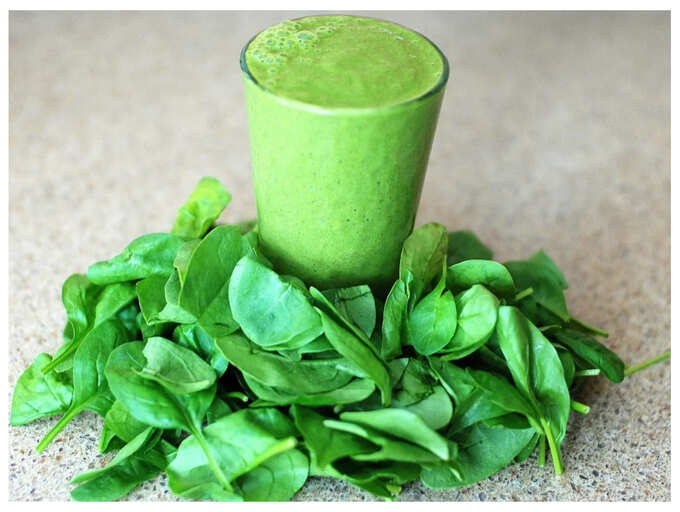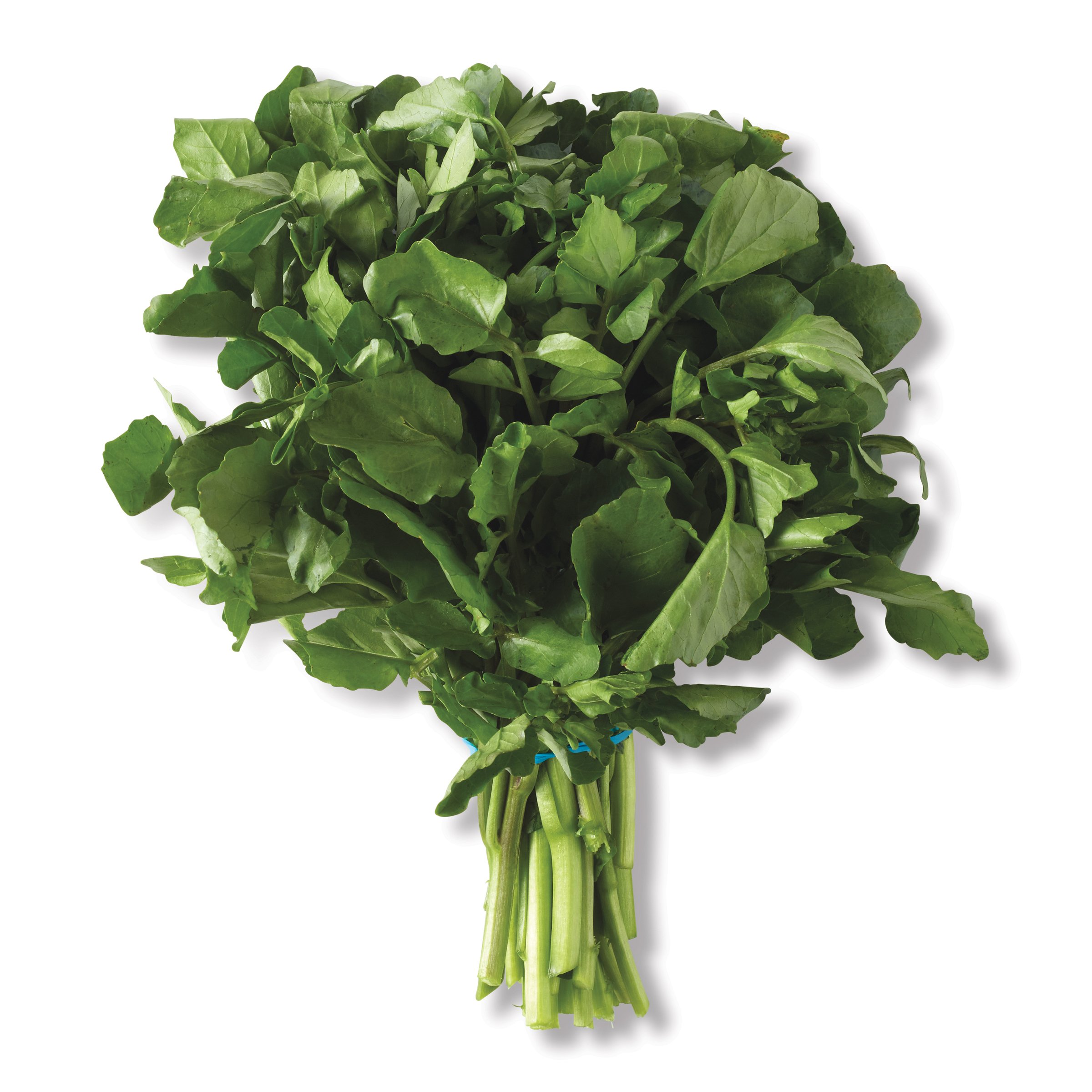Nature’s top nutrient-dense foods
The key is to eat a balance of highly nutritional foods, that when consumed together, do not contain too much of anyone nutrient, to avoid exceeding daily recommended amounts. That’s especially important when we are thrown out of our usual routines, as so many have been with enforced isolation during the current pandemic.
Imagine the ideal food. One that contains all the nutrients necessary to meet, but not exceed, our daily nutrient demands. If such a food existed, consuming it, without eating any other, would provide the optimal nutritional balance for our body.
Such food does not exist. But we can do the next best thing.
By now you’ve likely heard the term “superfood.” Although there is no scientifically based definition, a portion of food is generally elevated to that status when it offers a high level of nutrients that are particularly beneficial to your health and overall well-being, often linked to the prevention of disease.
Basically, superfoods are very nutrient-dense – the exact opposite of what so much of the typical American diet is made up of today, such as fast food, conveniently packaged foods, sodas, and the like.
In fact, about three-fourths of the U.S. population follows a diet that’s low in vegetables and fruits, yet most far exceed the recommendations for consuming added sugars and sodium.
One of the best ways to improve your physical and mental health, avoid early aging, and reach and maintain your ideal weight is to focus on consuming more nutrient-dense foods and less “junk.”
You’ll be providing your body with the nutrients it dearly needs while boosting its ability to burn fat at the same time. Now, many foods have been referred to as “superfoods,” sometimes due to the marketing of food companies that benefit from promoting them as such.
To clear the confusion and help you live long and live well, below you’ll find the most nutrient-dense foods that truly earn the designation of “superfoods.”
Eating healthy has oodles of positive benefits – for the body and the mind alike. When we eat well we feel good, when we feel good we’re happier, when we’re happier we’re more productive… and the wonderful cycle continues.
Increasingly, shops and restaurants around the world are getting on the healthy eating bandwagon – making it easier for people to treat their bodies right.
There is only a limited amount of food you can eat in a single day. To maximize the amount of nutrients you take in, it makes sense to spend your calorie budget wisely. The best way to do that is to simply eat the foods that carry the greatest amount and variety of nutrients.
The best way to do that is to simply eat the foods that carry the greatest amount and variety of nutrients. These are the most nutrient-dense foods on the planet.

Avocados-
Some people still avoid avocados due to their high-fat content, but this exceptionally nutrient-packed fruit contains mostly monounsaturated fat, a healthy type of fat found in studies to increase HDL, or “good” cholesterol, to improve heart health.
As avocados are also high in fiber, the combination helps one feel fuller and more satisfied longer, decreasing the chances of unhealthy snacking.
Eating just one or two avocados a week gives you all the benefits of healthy monounsaturated fats, Vitamin B6, and loads of folate. Check with your local grocer to find out when this spreadable fruit is in season in your area. On toast with salt and pepper or a slice of cheese if you’re that way inclined.
This “super” fruit is also high in vitamin E, an antioxidant many Americans don’t get enough of, along with potassium and magnesium. In fact, avocados provide more magnesium than most fruits in addition to being rich in folates.
Plus, just one cup contains nearly a quarter of the daily recommended value for folic acid. If you find yourself hungry in between meals, consider snacking on a few slices of avocado – it will help you avoid the temptation to turn to unhealthy foods while keeping your metabolism revved up, too.
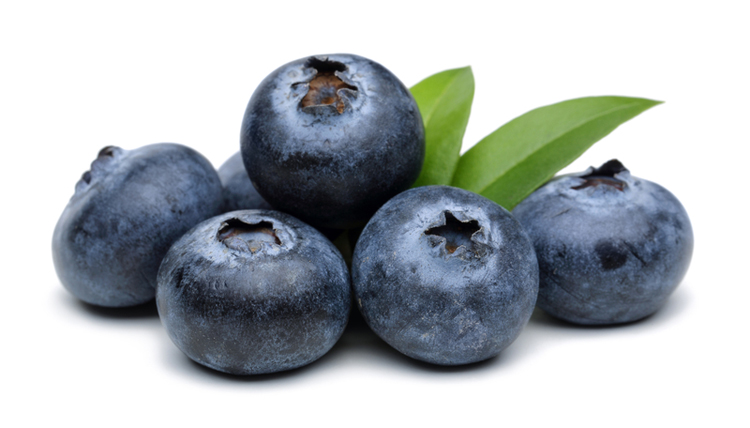
Blueberries – When it comes to the nutritional value of fruits, blueberries are in a league of their own. Although not as high — calorie for calorie — in vitamins and minerals as vegetables, they’re packed with antioxidants.
Sometimes called nature’s candy, blueberries have a sweet, juicy flavor few can resist, and they’re one of the most nutrient-dense foods on the planet.
They provide benefits for your health that far exceed their tiny size, jam-packed with antioxidants like proanthocyanidin and anthocyanins that have been found in scientific research to aid weight loss. They may also help fight cancer and provide anti-aging benefits to the skin.
Several studies have examined the health effects of blueberries in humans. One study found that blueberries improved memory in older adults. Another study found that obese men and women with metabolic syndrome had a lowered blood pressure and reduced markers of oxidized LDL cholesterol when they added blueberries to their diet.
Blueberries also contain a particularly powerful anti-inflammatory compound called quercetin, a phytonutrient that is known to reduce excess inflammation.
Foods like blueberries that are rich in quercetin can help manage many different types of inflammatory conditions, including the pain of arthritis, allergy symptoms, chronic fatigue, and even heart disease.
Spinach-
All leafy greens provide a wealth of nutrients, and spinach, a nutritional powerhouse, maybe the most popular of them all.
In addition to many vitamins and minerals like vitamins A and K, folate, magnesium, and iron, it provides powerful antioxidants that have been linked to disease protection and anti-inflammation.
This nutrient-dense green superfood is readily available – fresh, frozen, or even canned. One of the healthiest foods on the planet, spinach is packed with energy while low in calories and provides Vitamin A, Vitamin K, and essential folate.
The protective benefits of spinach based on its bioactive compounds and phytochemicals, stating that these substances can help lower the risk of disease, DNA damage, and oxidative stress.
They have also been found to positively influence metabolism and even trigger the release of satiety hormones that make one feel fuller after eating a meal. For these reasons, the experts concluded that consuming more spinach may help fight obesity, type 2 diabetes, heart disease, and cancer.
Kale-
This member of the cruciferous family of vegetables is another of the most nutrient-dense foods on the planet. While it’s incredibly rich in nutrients, it contains very few calories at just 33 per cup.
Of all the healthy leafy greens, kale is the king. It is loaded with vitamins, minerals, fiber, antioxidants, and various bioactive compounds.
A 100-gram portion of kale contains:
- Vitamin C: 200% of the RDI
- Vitamin A: 300% of the RDI
- Vitamin K1: 1,000% of the RDI
- Large amounts of vitamin B6, potassium, calcium, magnesium, copper, and manganese.
Kale is a great plant-based source of calcium, helpful for those who don’t consume dairy when it comes to supporting bone health and a wide range of cellular functions. Plus, kale offers something spinach doesn’t – it’s low in oxalate, a compound that can prevent minerals from being absorbed.
Kale maybe even healthier than spinach. Both are very nutritious, but kale is lower in oxalates, which are substances that can bind minerals like calcium in your intestine, preventing them from being absorbed.
If you’re concerned about high cholesterol, adding more kale to your diet may help you reduce it. It contains more than 40 phenolic compounds which can help reduce high cholesterol levels and fight many other serious medical conditions.
Kale is one of the most nutrient-dense vegetables you can eat, containing large amounts of vitamins, minerals, and cancer-fighting compounds.
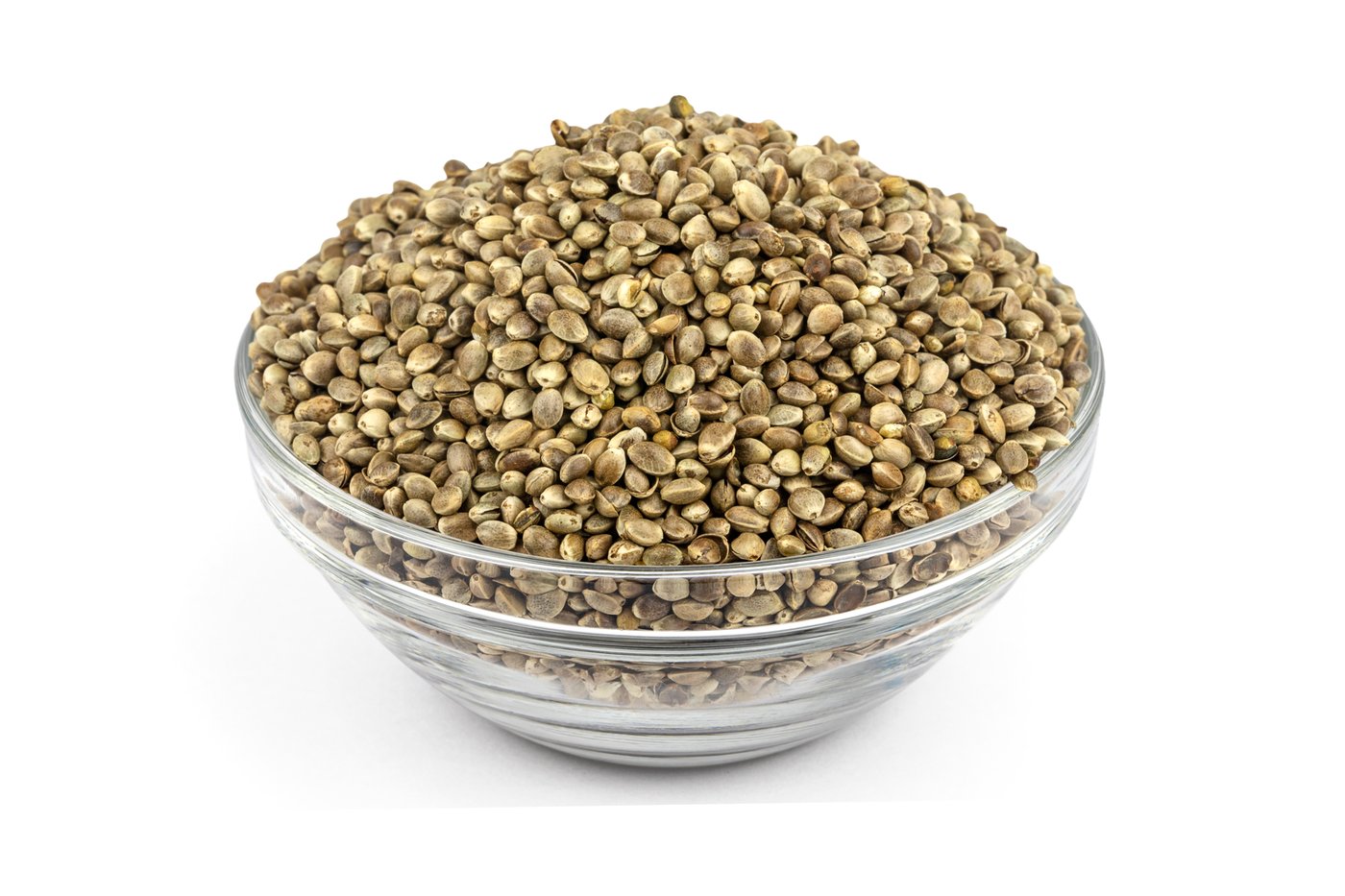
Hemp Seeds –
Hemp seeds make a great healthy snack on their own or can be tossed into a smoothie or sprinkled onto a salad. They are unique as they contain many of the nutrients necessary for maintaining a healthy diet, including a nearly perfect balance of omega 3 to omega 6.
Technically a nut, hemp seeds are very nutritious. They have a mild, nutty flavor and are often referred to as hemp hearts. Hemp seeds contain over 30% fat. They are exceptionally rich in two essential fatty acids, linoleic acid (omega-6) and alpha-linolenic acid (omega-3).
They also contain gamma-linolenic acid, which has been linked to several health benefits. They’re also rich in vitamin E, powerhouses of antioxidants, dietary fiber, and many minerals like magnesium, iron, zinc, Phosphorus, Potassium, Calcium, and copper. In fact, they’re one of the world’s most nutritionally complete food sources.
Hemp seeds are loaded with proteins that are easier to digest than animal proteins. As hemp requires far less carbon concentration, it’s better for the environment, too. These tiny seeds provide nearly 9.5 grams of protein in just three tablespoons.
Hemp seeds can be consumed raw, cooked, or roasted. Hemp seed oil is also very healthy and has been used as a food and medicine in China for at least 3,000 years.
This ideal ratio also provides anti-inflammatory benefits that may help manage the symptoms of chronic diseases like arthritis, metabolic syndrome and type 2 diabetes.

Sauerkraut (Fermented cabbage)-
Fermented foods like sauerkraut are considered to be an outstanding source of probiotics and they’re also incredibly nutrient-dense – just seek out the traditionally fermented type, and avoid the typical canned stuff, as it’s been pasteurized which means that most of the healthy bacteria have been killed off.
At just 27 calories a cup, it’s loaded with vitamin B6, vitamin K, folate, thiamin, and riboflavin. It also provides a third of the body’s needs for vitamin C and is rich in minerals like magnesium, potassium, and iron.
Sauerkraut is very nutritious. It contains many nutrients important for optimal health. One cup (142 grams) provides- Calories: 27, Fat: 0 grams, Carbs: 6 grams, Fiber: 4 grams, Protein: 1 gram, Sodium: 41% of the Daily Value (DV), Vitamin C: 23% of the DV, Vitamin K1: 15% of the DV, Iron: 12% of the DV, Manganese: 9% of the DV, Vitamin B6: 11% of the DV, Folate: 9% of the DV, Copper: 15% of the DV, Potassium: 5% of the DV
Fermenting cabbage to make sauerkraut increases the nutritional benefits while also making it more digestible and providing important probiotics that help create a better balance of gut bacteria.
Sauerkraut is particularly nutritious because it undergoes fermentation, a process during which microorganisms on the cabbage digest its natural sugars and convert them into carbon dioxide and organic acids.

Wild Caught Salmon-
Salmon is one of the most nutritious foods on the planet. This popular fatty fish is loaded with nutrients and may reduce risk factors for several diseases. It’s also tasty, versatile, and widely available.
If you do eat fish, it’s important to note that fatty fish that are least likely to contain mercury and other contaminants, such as wild-caught salmon, can provide many important nutrients that are beneficial to your health.
Salmon is rich in long-chain omega-3 fatty acids that provide significant anti-inflammatory properties in addition to benefiting your waistline, which has been shown to reduce inflammation, lower blood pressure and decrease risk factors for disease.
Salmon is also rich in high-quality protein that can help maintain muscle mass during weight loss and the aging process. It’s an excellent source of B vitamins, which work together to maintain optimal function of the nervous system and brain.
Your body requires protein to heal, protect bone health and prevent muscle loss, among other things. Salmon provides 22–25 grams of protein per 3.5-ounce serving. Salmon is an excellent source of several B vitamins, which are needed for energy production, controlling inflammation, and protecting heart and brain health.
Salmon is an excellent source of B vitamins. B vitamin content in 3.5 ounces (100 grams) of wild salmon: Vitamin B1 (thiamin): 18% of the RDI, Vitamin B2 (riboflavin): 29% of the RDI, Vitamin B3, niacin): 50% of the RDI, Vitamin B5 (pantothenic acid): 19% of the RDI, Vitamin B6: 47% of the RDI, Vitamin B9 (folic acid): 7% of the RDI, Vitamin B12: 51% of the RDI.
Watercress-
Watercress is an often overlooked leafy green that packs a powerful nutrient punch. Although in appearance it more so resembles a type of lettuce or spinach, watercress is actually a member of the Brassicaceae family of veggies, which also includes Brussels sprouts and cabbage.
Nutrient density is a measure of the nutrients a food contains in relation to how many calories it provides. Therefore, watercress is an extremely nutrient-dense food.
One cup (34 grams) of watercress contains the following: Calories: 4, Carbs: 0.4 grams, Protein: 0.8 grams, Fat: 0 grams, Fiber: 0.2 grams, Vitamin A: 22% of the Reference Daily Intake (RDI), Vitamin C: 24% of the RDI, Vitamin K: 106% of the RDI, Calcium: 4% of the RDI, Manganese: 4% of the RDI.
Amongst its many benefits, watercress may:
- Reduce the risk of breast, colorectal, and other cancers
- Reduce the risk of Alzheimer’s and help brain health
- Lower “bad” LDL cholesterol and protect against heart disease
- Boost athletic performance
- Protect against osteoporosis and improve bone health
- Boost eye health and protect against cataracts
- Boost collagen production for more beautiful skin.
Watercress is packed with plant compounds called antioxidants that protect against cell damage caused by free radicals, which are harmful molecules that lead to oxidative stress. Oxidative stress has been associated with several chronic illnesses including diabetes, cancer, and cardiovascular disease.
You can eat this delicate, peppery-tasting veggie raw, such as in salads, and in fact, eating it raw is one of the best ways to get the most nutrition out of watercress. You can also add it to soups and stews, add it to smoothies for a peppery kick, and really use it in any recipe that calls for a leafy green.
Eating watercress may be beneficial for heart health in several different ways-
- Watercress is a cruciferous vegetable
- Antioxidants improve heart health
- Dietary nitrates boost blood vessel health
- Watercress may lower blood pressure and Cholesterol
- Watercress contains many minerals necessary for bone health, including calcium, magnesium, potassium, and phosphorus
- High vitamin C level boosts the immune system by increasing the production of white blood cells that fight infections
- Nutrient density may aid weight loss.
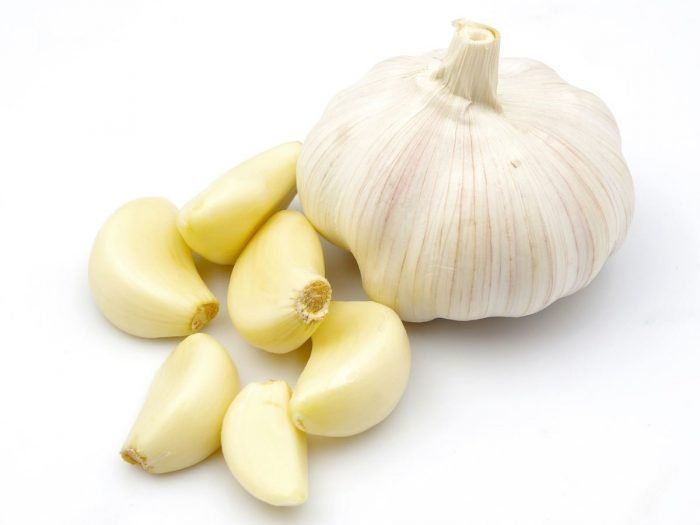
Garlic-
Garlic provides powerful anti-infection properties while boosting the immune system to help prevent catching the flu or a cold. It can also lower high cholesterol and blood pressure, and even reduce the risk of heart disease and cancer.
Garlic is a plant in the Allium (onion) family. It is closely related to onions, shallots, and leeks. Each segment of a garlic bulb is called a clove. There are about 10–20 cloves in a single bulb, give or take. However, the main use of garlic was for its health and medicinal properties.
Garlic is a natural wonder that can add delicious flavor and powerful health benefits to all sorts of dishes. It’s the most effective broad-spectrum antimicrobial agent with 39 different anti-viral, -fungal, and -bacteria agents while providing an excellent source of vitamin B6, vitamin C, selenium, and manganese.
Garlic is highly nutritious but has very few calories. It’s also a good source of minerals like calcium, phosphorous, potassium, copper, and iron.
One clove (3 grams) of raw garlic contains Manganese: 2% of the Daily Value (DV), Vitamin B6: 2% of the DV, Vitamin C: 1% of the DV, Selenium: 1% of the DV, Fiber: 0.06 grams. Decent amounts of calcium, copper, potassium, phosphorus, iron, and vitamin B1. This comes with 4.5 calories, 0.2 grams of protein, and 1 gram of carbs.
Other important benefits are –
- Garlic supplements are known to boost the function of the immune system.
- Human studies have found garlic supplements to have a significant impact on reducing blood pressure in people with high blood pressure.
- Garlic can lower total and LDL
- Garlic contains antioxidants that support the body’s protective mechanisms against oxidative damage from free radicals that contribute to the aging process.
- With the beneficial effects on important risk factors like blood pressure, it makes sense that garlic could help you live longer.
- People with heart disease who took garlic oil for 6 weeks had a 12% reduction in peak heart rate and better exercise capacity.
- Garlic appears to have some benefits for bone health by increasing estrogen levels in females, but more human studies are needed.

Beet –
Beetroot (Beta vulgaris) is a root vegetable also known as red beet, table beet, garden beet, or just beet. Beets provide a wealth of health benefits, including being one of the few sources of a phytonutrient called betalain.
Beetroots and beetroot juice have been associated with numerous health benefits, including improved blood flow, lower blood pressure, and increased exercise performance. Many of these benefits are due to their high content of inorganic nitrates.
This compound is what gives them their red color and is associated with their ability to
reduce the risk of cancer. The beetroot and greens are rich in magnesium, potassium, iron, phosphorous, beta-carotene, folic acid, fiber, and vitamins A, B, and C.
The main plant compounds in beetroots are:
- Betanin. Also called beetroot red, betanin is the most common pigment in beetroots, responsible for their strong red color. It is believed to have various health benefits.
- Inorganic nitrate. Found in generous amounts in leafy green vegetables, beetroots, and beetroot juice, inorganic nitrate turns into nitric oxide in your body and has many important functions.
- Vulgaxanthin. A yellow or orange pigment found in beetroots and yellow beets.
Beetroots are delicious raw but more frequently cooked or pickled. Their leaves — known as beet greens — can also be eaten. There are numerous types of beetroot, many of which are distinguished by their color — yellow, white, pink, or dark purple.
Beets mainly consist of water (87%), carbs (8%), and fiber (2–3%). One cup (136 grams) of boiled beetroot contains fewer than 60 calories, while 3/4 cup (100 grams) of raw beets boasts the following nutrients:
Calories: 43, Water: 88%, Protein: 1.6 grams, Carbs: 9.6 grams, Sugar: 6.8 grams, Fiber: 2.8 grams, Fat: 0.2 grams.
- Raw or cooked beetroot offers about 8–10% carbs.
- Beetroots should not have a major effect on blood sugar levels because the total carb amount in each serving is low.
- Lowers Blood pressure.
- Increases exercise capacity.
- Contains Folate (vitamin B9). One of the B vitamins, folate is important for normal tissue growth and cell function. It’s particularly necessary for pregnant women.
- Contains Manganese. An essential trace element, manganese is found in high amounts in whole grains, legumes, fruits, and vegetables.
- Contains Potassium. A diet high in potassium can lead to reduced blood pressure levels and positive effects on heart health.
- Contains Iron. An essential mineral, iron has many important functions in your body. It’s necessary for the transport of oxygen in red blood cells.
- Contains Vitamin C. This well-known vitamin is an antioxidant that is important for immune function and skin health.

Chili peppers –
Chili peppers are high in healthy flavonoids and carotenes. They provide 108 percent of the daily requirements for vitamin C in just one tablespoon to help the body resist infection and fight off free radicals.
Chili peppers (Capsicum annuum) are the fruits of Capsicum pepper plants, notable for their hot flavor. Chili peppers are primarily used as a spice and can be cooked or dried and powdered. Powdered, red chili peppers are known as paprika.
If you like spicy foods, you’ll be happy to learn that chili peppers are also very nutrient-dense. Chili peppers provide some carbs and offer a small amount of protein and fiber.
Like all peppers, they contain an antioxidant called capsaicin that gives them their kick, promotes health, and even boosts the metabolism and, research shows even may aid weight loss. They can even stimulate certain chemicals in the brain that help decrease hunger.
The nutrition facts for 1 tablespoon (15 grams) of raw, fresh, red chili peppers are:
Calories: 6, Water: 88%, Protein: 0.3 grams, Carbs: 1.3 grams, Sugar: 0.8 grams, Fiber: 0.2 grams, Fat: 0.1 grams.
Chili peppers are only eaten in small amounts, so their contribution to daily intake is minuscule but are rich in various vitamins and minerals.
Vitamin C. Chili peppers are very high in this powerful antioxidant, which is important for wound healing and immune function.
Vitamin B6. A family of B vitamins, B6 plays a role in energy metabolism.
Vitamin K1. Also known as phylloquinone, vitamin K1 is essential for blood clotting and healthy bones and kidneys.
Potassium. An essential dietary mineral that serves a variety of functions, potassium may reduce your risk of heart disease when consumed in adequate amounts.
Copper. Often lacking in the Western diet, copper is an essential trace element, important for strong bones and healthy neurons.
Vitamin A. Red chili peppers are high in beta carotene, which your body converts into vitamin A.
Chili peppers are high in healthy flavonoids and carotenes. They provide 108 percent of the daily requirements for vitamin C in just one tablespoon to help the body resist infection and fight off free radicals.
Despite their burning taste, chili peppers have long been considered a healthy spice. Capsaicin, the chemical in chili peppers that makes them hot, is used as an analgesic in topical ointments, nasal sprays, and dermal patches to relieve pain
Turmeric-
Turmeric is the spice that gives curry its yellow color. It has been used in India for thousands of years as a spice and medicinal herb. Recently, science has started to back up what Indians have known for a long time — it really does contain compounds with medicinal properties.
This superstar is a bright yellow-hued spice that is often used in Indian dishes such as curry. It has a long history of medicinal use in traditional Ayurvedic medicine, and in more recent years, its benefits have been well-documented in scientific studies.
Turmeric may be the most effective nutritional supplement in existence. Many high-quality studies show that it has major benefits for your body and brain.
Turmeric provides powerful anti-inflammatory properties to help battle inflammation that can help reduce the risk or improve a wide range of conditions. Now, inflammation is an essential part of the body’s processes, helping to battle foreign invaders and repair any damage left behind.
These compounds are called curcuminoids, the most important of which is curcumin. Curcumin is the main active ingredient in turmeric. It has powerful anti-inflammatory effects and is a very strong antioxidant. However, the curcumin content of turmeric is not that high. It’s around 3%, by weight.
Most of the studies on this herb are using turmeric extracts that contain mostly curcumin itself, with dosages usually exceeding 1 gram per day. Curcumin is also fat-soluble, so it may be a good idea to take it with a fatty meal. In addition, curcumin boosts the activity of your body’s own antioxidant enzymes.
Curcumin can also boost the body’s antioxidant capacity to help battle free radicals that can damage cell membranes. This oxidative damage is believed to be one of the mechanisms behind aging and all sorts of diseases.
Following are the health benefits of Turmeric-
- Curcumin improves brain function and lowers the risk of brain disease
- Curcumin lowers the risk of heart disease
- Turmeric can help prevent cancer
- Curcumin may be useful in preventing and treating Alzheimer’s disease
- Arthritis patients respond very well to Curcumin supplements
- Studies show that Curcumin has incredible benefits against depression
- Curcumin helps fight against age-related chronic disease.

Mushrooms-
Mushrooms not only add a tasty, earthy flavor to dishes, but they also provide some of the most powerful medicinal benefits of all foods, from enhancing weight loss efforts to fighting heart disease and cancer.
White mushrooms are the most cultivated type of mushroom in the world. Aside from being very low in calories, they offer multiple health-promoting effects, such as improved heart health and cancer-fighting properties.
Like most mushrooms, white mushrooms are low in calories but pack plenty of nutrients.
One cup (96 grams) of whole white mushrooms provides- Calories: 21, Carbs: 3 grams, Fiber: 1 gram, Protein: 3 grams, Fat: 0 grams, Vitamin D: 33% of the Daily Value (DV), Selenium: 16% of the DV, Phosphorus: 12% of the DV, Folate: 4% of the DV.
Consuming them will get you over a dozen vitamins and minerals, including magnesium, zinc, potassium, and copper, as well as some B vitamins like folate.
Due to their exposure to UV rays or sunlight, mushrooms are a natural, non-animal source of vitamin D2 that’s capable of increasing blood levels of this vitamin as effectively as a supplement — and white mushrooms are no exception.
Your body turns vitamin D2 into the active form of vitamin D, which it needs to absorb calcium and keep your bones healthy. Mushrooms are also loaded with fiber to help keep you feeling fuller longer, preventing unhealthy snacking.
Nature’s top nutrient-dense foods
In this post Nature’s top nutrient-dense foods part I is explained. Part II will be published very shortly.
Look out for our second post on Nature’s top nutrient-dense foods.
